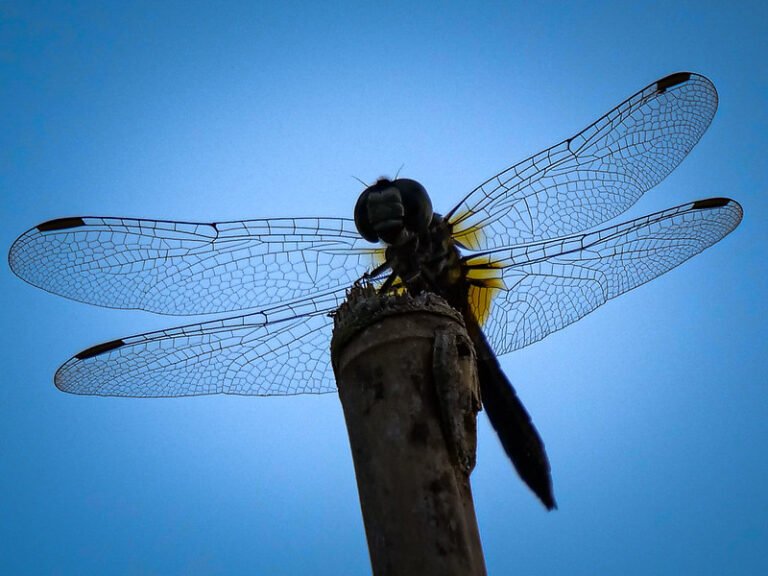
Wings of Transformation
Have you ever wondered how the dragonfly got its name? The word likely comes from old European folklore—possibly a mistranslation of the Romanian “dragon’s fly,” rooted in the word drac, which means both “dragon” and “devil.” In medieval times, people called them “devil’s darning needles,” with stories warning that they could sew shut the eyes or mouths of the wicked. As strange as these legends sound today, they reveal something about the unsettling power the dragonfly once held in the human imagination—seen not just as an insect, but as a creature straddling the line between worlds.
Other cultures saw something different. In Japan, the dragonfly is a symbol of courage, joy, and new beginnings. Ancient texts even referred to the islands of Japan as Akitsushima—“Land of the Dragonfly.” Among Native American tribes, dragonflies are tied to water and wind, often serving as messengers between realms or emblems of transformation. In Celtic and Norse traditions, they’re connected to the fae—light, elusive, and always in motion.
What all these stories seem to recognize is that the dragonfly doesn’t stay in one form for long. It begins its life in water, hidden and earthbound, before emerging into the open air, leaving its old skin behind. Its wings unfold and catch the light—suddenly, it belongs to another element. That kind of transformation isn’t just physical; it’s archetypal. We see it in ourselves when we outgrow old identities, when something ancient in us rises to the surface and takes flight.
This is the essence of spiritual unfoldment—not the acquisition of something new, but the remembering of what has always been true. Like the dragonfly, we move through hidden stages, often submerged in unconscious patterns, bound by habits and identities we mistook for ourselves. But there comes a time, sometimes quietly and sometimes with force, when awareness breaks the surface.
Through that awareness, we begin to see—not just the world, but ourselves. And in seeing clearly, we begin to change. Not by effort alone, but by the dissolving of illusion. The falsehoods we’ve worn—fear, shame, ego, expectation—begin to lose their grip, like a nymph shedding its skin. What remains is lighter. Freer. Closer to what we were before the world told us who to be.
This is not about striving. It is about returning. Returning to the essence. To clarity. To flight.
The dragonfly does not crawl back into the water once it has taken wing. It lives in full sunlight, a creature of movement and light. Its transformation is a testament to what’s possible—not just for insects, but for all beings who dare to awaken.
We were born to fly, too. Not away from life, but deeper into it—with open eyes, open wings, and the courage to let go of what we are not.